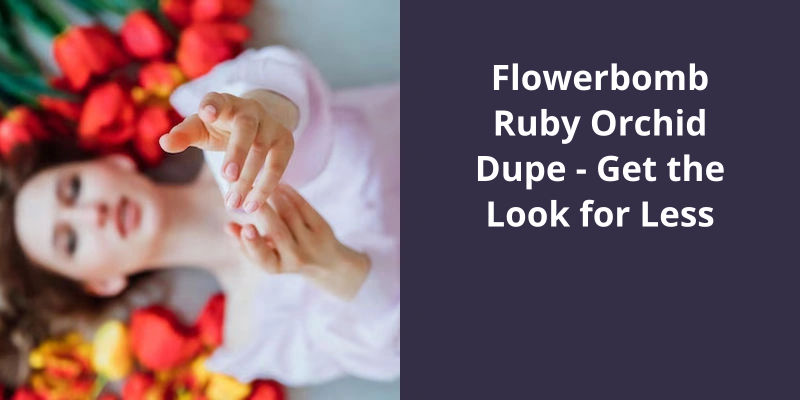Oud Wood has a unique scent that’s largely characterized as being warm, sweet, and woody. It comes from the Southeast Asian agar tree. When mold infects the tree, it reacts by producing a resin, which is the oud. Age, location, and infection method can all affect the specific scent of the oud. The scent is often described as luxurious and rich, with a hint of smoky and balsamic characteristics. It’s often mixed with florals or other fresh scents to balance out its heavy base note in perfumes and colognes.

What Kind of Fragrance Is Oudh?
Oud wood is a truly versatile and unique ingredient in the fragrance world. Known for it’s distinct woody aroma, oud brings a sense of sophistication and depth to any composition it’s a part of. This precious material is derived from the resinous agarwood tree, which is indigenous to Southeast Asia.
It’s deep and mysterious character blends seamlessly with other woody notes like sandalwood, cedarwood, and patchouli. These fragrances are often described as comforting and luxurious, with a touch of sensuality.
When oud is combined with sandalwood, it creates a harmonious blend that’s creamy, smooth, and inviting.
Cedarwood and oud also make a captivating pairing. The combination of these two ingredients can transport you to a serene forest, surrounded by towering trees and a sense of tranquility.
Patchouli, a well-known note in the fragrance world, also works beautifully with oud. The earthy and musky characteristics of patchouli harmonize with the deep and smoky nuances of oud, creating a scent that’s captivating and mysterious. The combination of these two ingredients can evoke a sense of sensuality and enigma.
When combined with notes like sandalwood, cedarwood, and patchouli, it adds depth, sophistication, and a touch of sensuality to the composition.
Different Types of Oud Fragrance: Discuss the Variations in Oud Fragrances, Such as Pure Oud Oil Versus Blended Oud Fragrances, and the Different Scents and Characteristics They Offer.
There are various types of oud fragrances available, each offering unique scents and characteristics. Pure oud oil, derived from the agarwood tree, is highly prized for it’s rich and potent aroma. It exudes a warm and woody scent with deep, earthy undertones, often described as complex and intoxicating.
Blended oud fragrances, on the other hand, combine oud with other notes to create different scent profiles. These blends can incorporate elements such as floral, fruity, spicy, or leathery notes, resulting in a more diverse range of olfactory experiences.
These variations in oud fragrances allow for a wide array of scent combinations and personal preferences. Whether one enjoys the pure essence of oud or prefers the complementing aromas of blended fragrances, there’s a unique oud scent for everyone to explore.
Now let’s delve deeper into the distinct characteristics and uses of oud and sandalwood, exploring their various properties, cultural significance, and applications in perfumery and skincare.
What Is the Difference Between Sandalwood and Oud?
When it comes to exploring the world of fragrances, two popular choices that often come up are sandalwood and oud. These are both highly sought-after scents, but what exactly sets them apart? Lets take a closer look at the difference between sandalwood and oud.
Oud, also known as agarwood, is derived from the wood of the tropical Agar (Aquilaria) tree. This tree is native to several parts of Asia, including India, Bangladesh, and parts of southeast Asia. Oud has a rich history and is highly valued for it’s distinct musky fragrance. It’s often described as having a deep and complex scent, with notes that range from woody and smoky to sweet and resinous. Oud is renowned for it’s longevity and sillage, meaning it’s a strong projection and can linger on the skin for many hours.
On the other hand, sandalwood is a class of woods that comes from trees in the genus Santalum. These trees are native to various regions, including India, Australia, and Hawaii. Sandalwood has been used for centuries in many cultures for it’s warm and woody aroma. Unlike many other aromatic woods, sandalwood has the unique ability to retain it’s fragrance for decades, making it highly desirable in perfumery. It’s a soft and creamy scent that’s often described as luxurious and comforting.
Oud is often used as a base note in perfumes, adding depth and complexity to the blend. Sandalwood, on the other hand, is versatile and can be used as both a base note and a middle note.
The Different Types and Varieties of Sandalwood and Oud Available.
- Sandalwood essential oil
- Indian sandalwood
- Australian sandalwood
- Hawaiian sandalwood
- Mysore sandalwood
- Indonesian sandalwood
- New Caledonian sandalwood
- Vietnamese oud
- Cambodian oud
- Thai oud
- Mysore oud
- Burmese oud
- Malaysian oud
Watch this video on YouTube:
Oud captivates our senses with it’s mysterious allure and enchanting aroma. Derived from the resin of trees, this intensely fragrant oil mesmerizes with it’s earthy notes and distinctive character. Often used as a base note in perfumery, the deep and animalic scent of oud lends a sensual and woody dry down to fragrances. It’s seductive qualities have made oud perfumes synonymous with allure and romance. But what exactly gives oud it’s unique smell? Let’s dive into the fascinating world of oud and explore the olfactory secrets behind it’s captivating fragrance.
What Makes an Oud Smell?
What makes an oud smell so distinctive and alluring? It all comes down to the oil extracted from tree resin. Oud is known for it’s intense fragrance, which is why it’s often used as a base note in perfumery. It’s unique depth and rich animalic aroma add a sensual, woody dry down to any fragrance it’s featured in.
When it comes to seduction, oud fragrances are unrivaled. The rich, deeply intoxicating scent has a way of captivating the senses and leaving a lasting impression. It exudes sensuality and confidence, making it a popular choice for those who want to make a bold and unforgettable statement.
The significance of Oud extends far beyond it’s aromatic properties. It’s come to represent opulence, spirituality, and a connection to the past. This precious resin has been revered and cherished by diverse civilizations throughout history, leaving an indelible mark on the world’s cultural tapestry.
What Does the Oud Symbolize?
What does the Oud symbolize? Oud has long been a symbol of wealth and luxury. Multiple cultures across Europe and Asia, reference the use of Oud in religious and sacred ceremonies. Oud is so entrenched in human history that references to the scent lie in ancient scriptures from across the globe.
Furthermore, Oud is known for it’s medicinal and therapeutic properties. It’s been used in traditional medicine for centuries, believed to have healing and rejuvenating effects. It’s fragrance is believed to have a calming effect on the mind and may help alleviate stress and anxiety.
It’s a rich cultural heritage and a deep-rooted significance in various religious practices. It’s association with wealth and opulence has made it a coveted scent throughout history. It’s unique aroma continues to captivate and enchant, making it a symbol of prestige and allure.
When it comes to Arabian oudh, the scent can vary immensely depending on several factors. The type of oudh, the duration of aging, and the quantity used all play a role in shaping it’s fragrance profile. From a smooth and velvety aroma to the smell of sun-dried hay, or even a bustling barnyard amidst the heat of a ripe summer’s day, Arabian oudh encompasses a wide range of scents and experiences.
What Does Arabian Oudh Smell Like?
Arabian oudh, with it’s rich and enchanting aroma, exudes a captivating allure that’s fascinated perfumers and fragrance aficionados for centuries. This precious ingredient is derived from the resinous heartwood of agarwood trees found in Southeast Asia, particularly in countries like India, Cambodia, and Thailand.
When distilled from wild agarwood trees, the resulting oudh tends to be rugged and intense, offering a woody, earthy aroma reminiscent of ancient forests. This natural oudh can evoke a feeling of being enveloped in a thick cloud of smoky incense, transporting you to a mystical realm.
Aged oudh, on the other hand, takes on a smoother, more refined character. Over the years, the resinous compounds within the wood mature and develop, lending a velvety texture to the fragrance. Aged oudh releases a complex bouquet of scent notes, ranging from warm and leathery to sweet and balsamic. It can exhibit hints of vanilla, tobacco, spices, and even floral undertones, creating a captivating symphony of aromas.
The quantity of oudh used in a fragrance also plays a significant role in determining it’s olfactory profile. A small dose of oudh can add depth and complexity, imparting a touch of enchantment to a composition. In contrast, a heavy-handed application of oudh can dominate a scent, creating a bold and powerful presence. It’s this versatility that makes oudh a prized ingredient in perfumery, as it can be used to create a wide range of fragrances, from delicate and elegant to daring and sensual.
While some may find the scent of oudh to be reminiscent of fresh hay drying in the sunshine, others may associate it with a bustling barnyard on a particularly ripe summers day. This diversity of associations is a testament to oudhs complexity and the subjective nature of scent perception.
Source: So you think you hate… Oudh – The Perfume Society
Sandalwood, often described as a “woody” fragrance, belongs to the woody scent family, which includes various scents like pine, cedar, cypress, vetiver, and patchouli. While sandalwood predominantly exudes a strong woody aroma, it also carries hints of sweetness, spiciness, and muskiness. This combination creates a unique and earthy scent that sets sandalwood apart.
Is Sandalwood a Musky Smell?
Sandalwood, with it’s warm and inviting aroma, is often associated with musky fragrances. However, it’s important to note that sandalwood itself isn’t classified as a musky smell. Instead, it belongs to the woody fragrance family. When you take a whiff of sandalwood, youll immediately notice it’s distinct earthy scent, which is often described as creamy, smooth, and rich.
While sandalwood possesses it’s own unique character, it shares similarities with other woody scents such as pine, cedar, cypress, vetiver, and patchouli. These fragrances can help you navigate the world of sandalwood and guide you in the right olfactory direction.
One of the remarkable qualities of sandalwood is it’s ability to strike a perfect balance between sweetness, spiciness, and muskiness while retaining it’s strong woody essence. It’s this harmonious blend of different elements that gives sandalwood it’s intoxicating allure.
The Origins and History of Sandalwood as a Fragrance
Sandalwood is a highly prized fragrance that’s a rich history and deep cultural significance. It comes from the heartwood of the sandalwood tree, which is native to areas like India, Sri Lanka, and Australia. The scent of sandalwood is warm, creamy, and woody, with hints of sweetness and spice.
For thousands of years, sandalwood has been used in religious ceremonies, meditation practices, and traditional medicine. It’s a calming and grounding effect on the mind and is often associated with spiritual and sacred spaces.
In the fragrance world, sandalwood is frequently used as a base note, providing a smooth and luxurious foundation to many perfumes. It’s aroma blends beautifully with other ingredients, enhancing their overall composition.
Oud wood, also known as agarwood, is another fragrant ingredient that’s often compared to sandalwood. It’s a similar woody and resinous smell, but with a stronger and more intense character. Oud wood is derived from the infected resinous heartwood of the aquilaria tree, primarily found in Southeast Asia and the Middle East.
Both sandalwood and oud wood have been highly valued for centuries due to their distinct and captivating scents. Whether used individually or in combination with other ingredients, they add depth, complexity, and an air of sophistication to fragrances.
Conclusion
The powerful, yet alluring scent opens with a rich and assertive oud accord that immediately grabs your attention. The sandalwood and vanilla lend a creamy and comforting touch, while the tonka and amber provide warmth and depth.





